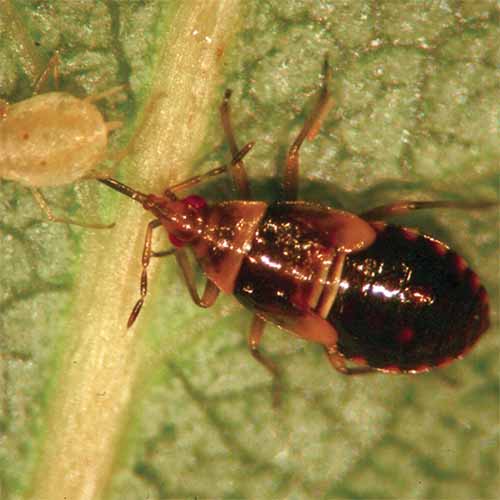
Caulimovirus dahliae
Growing dahlias requires patience. They don’t simply pop up in spring with their big, brilliant flowers.
Instead, the plants slowly develop over the summer until you’re finally rewarded with a colorful display that’s incomparable.
All that slow development leaves lots of time for something to go wrong.
Sometimes, along the way, your plants may start to look funky. Maybe you’ll see distorted growth, or perhaps there’s strange yellowing of the leaves.

We link to vendors to help you find relevant products. If you buy from one of our links, we may earn a commission.
If you see these symptoms, it’s possible that dahlia mosaic virus has found its way to your garden.
If that’s the case, the news isn’t good. This disease is incurable, but if you identify it quickly, you can take steps to save the rest of your dahlias that are as yet unaffected.
So as much as you might want to stick your head in the sand and hope that dahlia mosaic virus goes away, you’ve got to learn how to identify this issue and what you can do to address it.
In this guide, we’ll go over the following to help you do just that:
What Is Dahlia Mosaic Virus?
Dahlias can be infected by numerous viruses, but one of the most common is dahlia mosaic virus (DMV).
It’s a pathogen in the Caulimovirus genus, with the binomial C. dahliae. All of the species in this genus rely on live plants as hosts. It is the only DNA virus to infect dahlias.
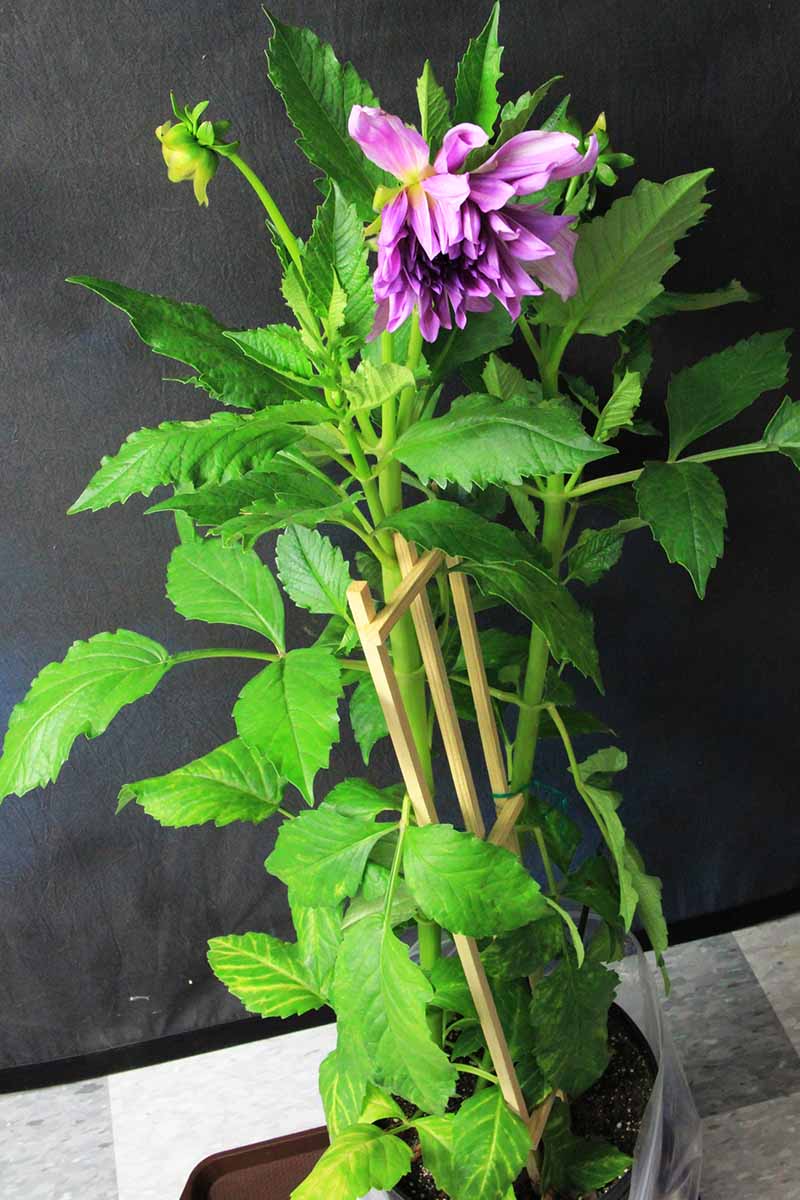
Not sure what that means? There are two common types of viruses that infect plants: DNA and RNA.
The difference doesn’t really matter to those of us just trying to grow our flowers, but it’s worth noting that DNA viruses tend to evolve more rapidly and, as a result, evade our control strategies.
There are numerous strains of dahlia mosaic virus, including DMV-D10, DMV-Holland, DMV-Portland, dahlia common mosaic virus (DCMV). A single plant can be infected by multiple strains at the same time.
A single plant could also be infected by another type of virus, including tomato-spotted wilt, impatiens necrotic spot, cucumber mosaic, or tobacco streak viruses. These can cause similar symptoms to DMV.
Identification
One of the more challenging aspects of dahlia mosaic virus is that it’s difficult to identify.
Sometimes, an infected plant may show no symptoms at all, while other plants might have every symptom imaginable.
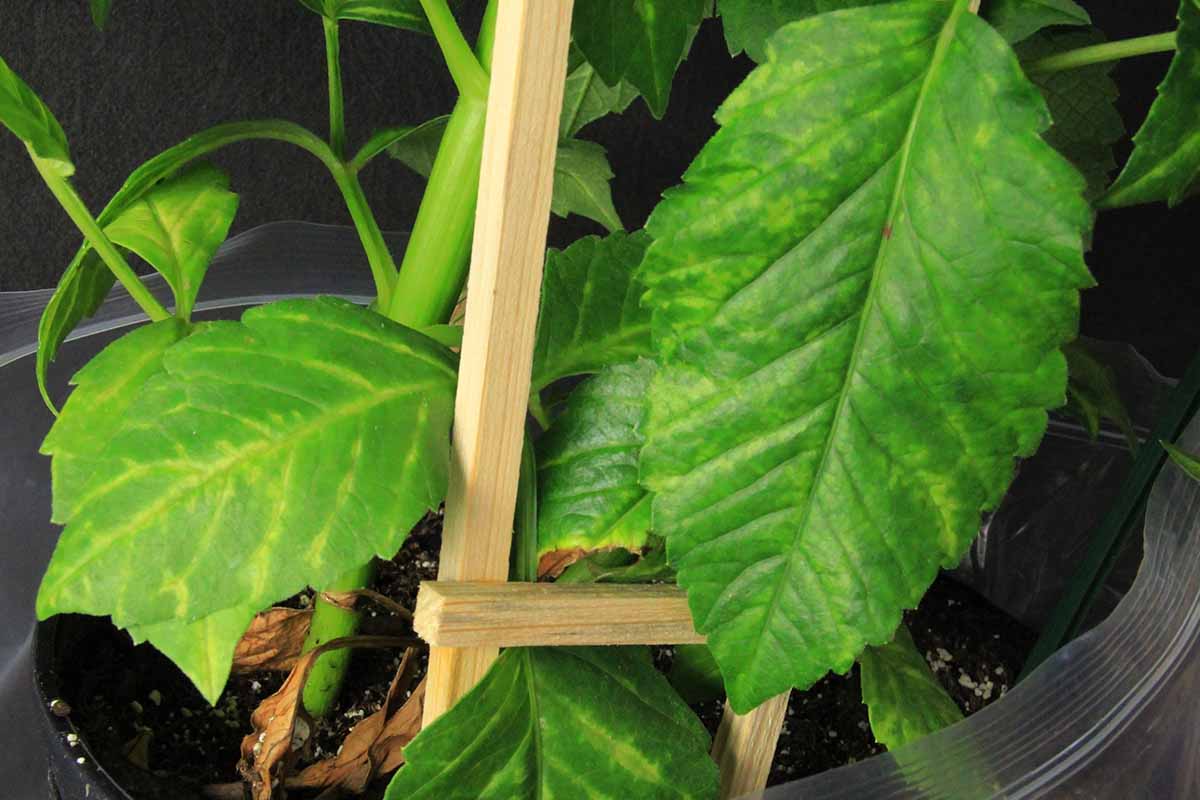
One of the most common symptoms is stunted growth, where the plant just doesn’t seem to grow well no matter what you do.
Plants infected early in the year tend to be the most stunted. Those with stunted growth might not bloom at all, or will have few, small blossoms.
It also causes leaf discoloration in several different ways. You might see mosaic patterns on the foliage, or the leaves will lose color in patches and turn chlorotic along the veins. Sometimes, the chlorosis will appear randomly along the leaf blade.
Chlorosis over the entire leaf surface is likely to be the result of a nutrient deficiency, as dahlia mosaic virus shows up as spots of chlorosis.
The veins might lose color, known as vein clearing. Or, they might exhibit vein banding, which is when dark bands of color appear next to the veins.
And it’s not just the leaf coloring that is impacted, the flowers can be discolored as well. Flower discoloration might include breaking, which refers to the appearance of streaks or stripes on some petals, splotches, or fading.
The virus might also cause distorted leaf, stem, or flower growth, which might show up as twisted, curled, crinkled, or otherwise funky forms.
Finally, you might see necrotic lesions on the leaves and/or petioles, which are brown or black areas of dying plant tissue, usually in the form of spots.
The only way to be certain you are dealing with a virus and which virus is infecting your plants is to send or take a sample to your local extension office or diagnostic lab.
Many extension offices and labs will test your sample for free or at a very low cost, as it helps them track where the problem is popping up. So don’t hesitate to take a sample, that way you can be sure of the specific issue.
Biology and Life Cycle
Nobody likes aphids or thrips, to begin with, but here’s another reason to eradicate them from your garden. These common garden pests play host to the virus and can transmit it between plants as they feed.

The virus can also be carried in infected seeds or tubers, making it all the more important to buy from reputable sellers.
Once the virus finds a host, it begins reproducing. Then, it waits for a friend to carry it to a new host, whether that’s you dividing your plants or a pest that feeds on an infected plant.
Organic Control Methods
Since there is no cure for dahlia mosaic virus, controlling its spread is key.
First of all, always, always, always clean your tools between plants. Not just between working on your dahlias but any other species as well.
You can scrub them under hot water with some soap, or wipe them with a 10 percent bleach solution.
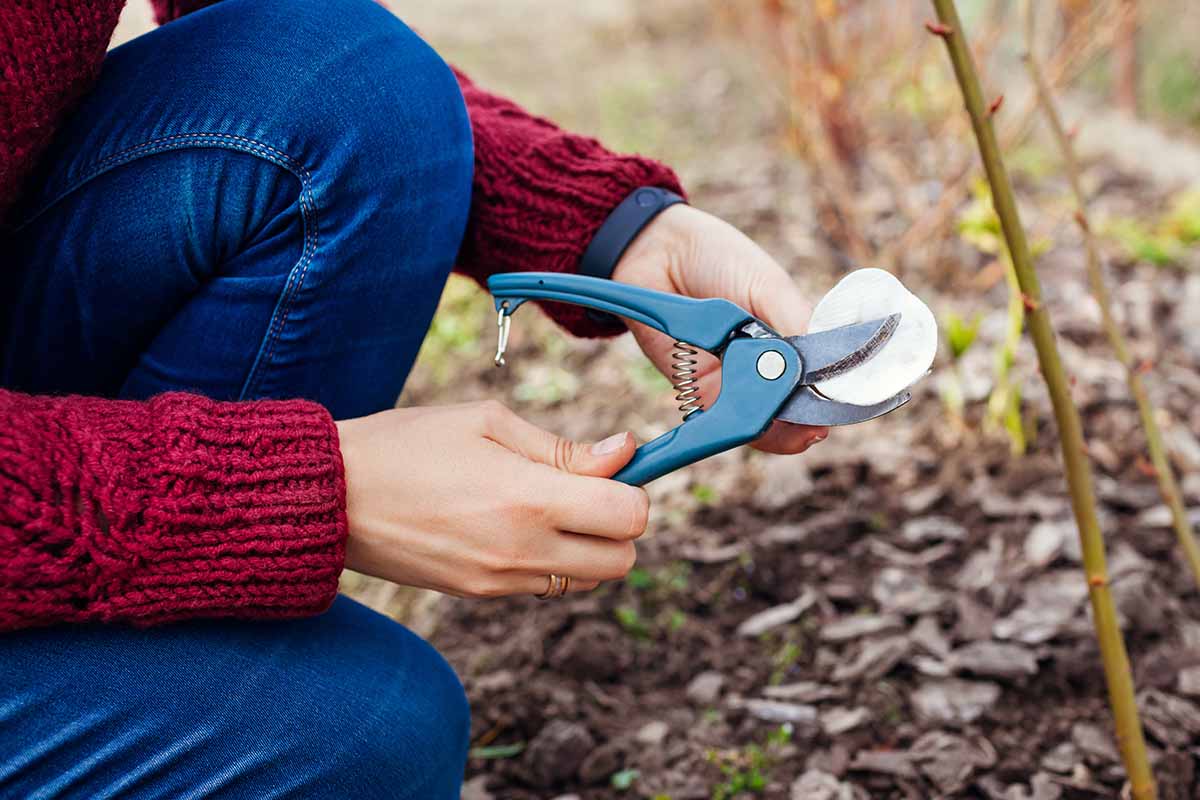
I will sometimes take a cup with me into the garden when I’m doing a lot of pruning. That way I can wipe my tools between each plant without having to run back into my house and do a thorough cleaning each time.
You can also use Virkon S, a veterinarian and farm biosecurity product that you can usually find at farm supply stores.
While the disease can sometimes be hit-and-miss in the garden for reasons not yet understood, decimating one plant and leaving another untouched, there are currently no consistently resistant cultivars available.
Physical
Sadly, since there is no cure, you can either live with the problem, knowing that it will probably infect all of your dahlias and maybe your neighbor’s, too or you can choose to remove the infected plants.
This is the preferred “treatment,” since it helps reduce the virus’ presence overall and won’t threaten other nearby growers.
The American Dahlia Society advocates for a policy of “if in doubt, throw it out.”

At a minimum, never propagate seeds or tubers from infected plants. The resulting plants will definitely be infected with the virus.
If you are growing dahlias for cut flowers, you can use floating row covers to keep the aphids out.
Biological
Predatory mites can help control thrips and aphid populations. Amblyseius cucumeris works best in temperatures under 90°F, and A. swirskii works well when temperatures are above that.
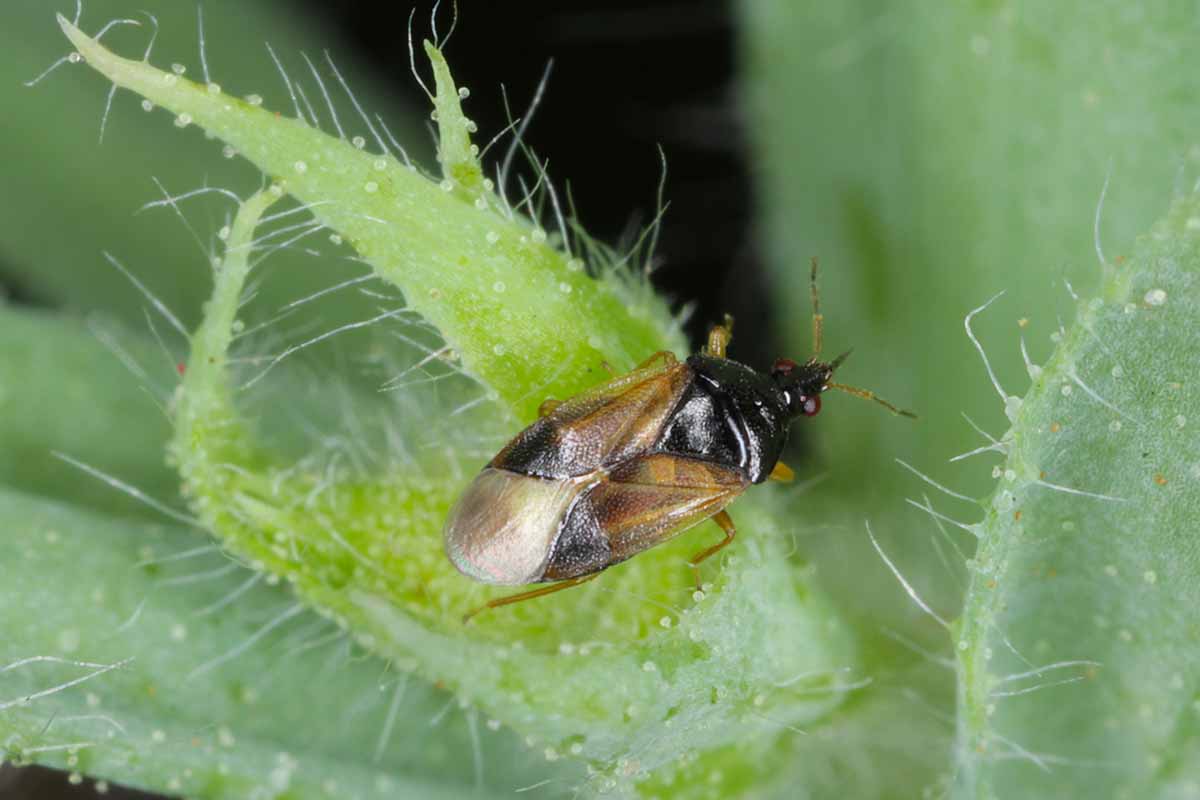
A healthy population of green lacewings (Chrysoperla rufilabris), assassin bugs (Zelus renardii), and minute pirate bugs (Orius insidiosus) can also help keep thrips and aphid numbers under control, reducing the incidence of transmittal.
You can introduce these garden helpers by purchasing them at retailers that specialize in pest control.
For example, you can purchase 500, 1,000, or 2,000 minute pirate bugs at Arbico Organics.
Use these in addition to an aphid predator like Aphelinus abdominalis.
This species is absolutely ravenous, can survive a wide range of temperatures, and eats numerous aphid species.
Once again, Arbico Organics has you covered with 250 or 1,000 mummies.
Organic Pesticides
If you start to see aphids and thrips arriving in your garden, spray your plants with insecticidal soap.
This carries a low risk of harming beneficial insects and can dramatically reduce aphid and thrip populations.
The catch is that it’s not as effective once populations build up. You need to use it the second you see pests appear early in the growing season.
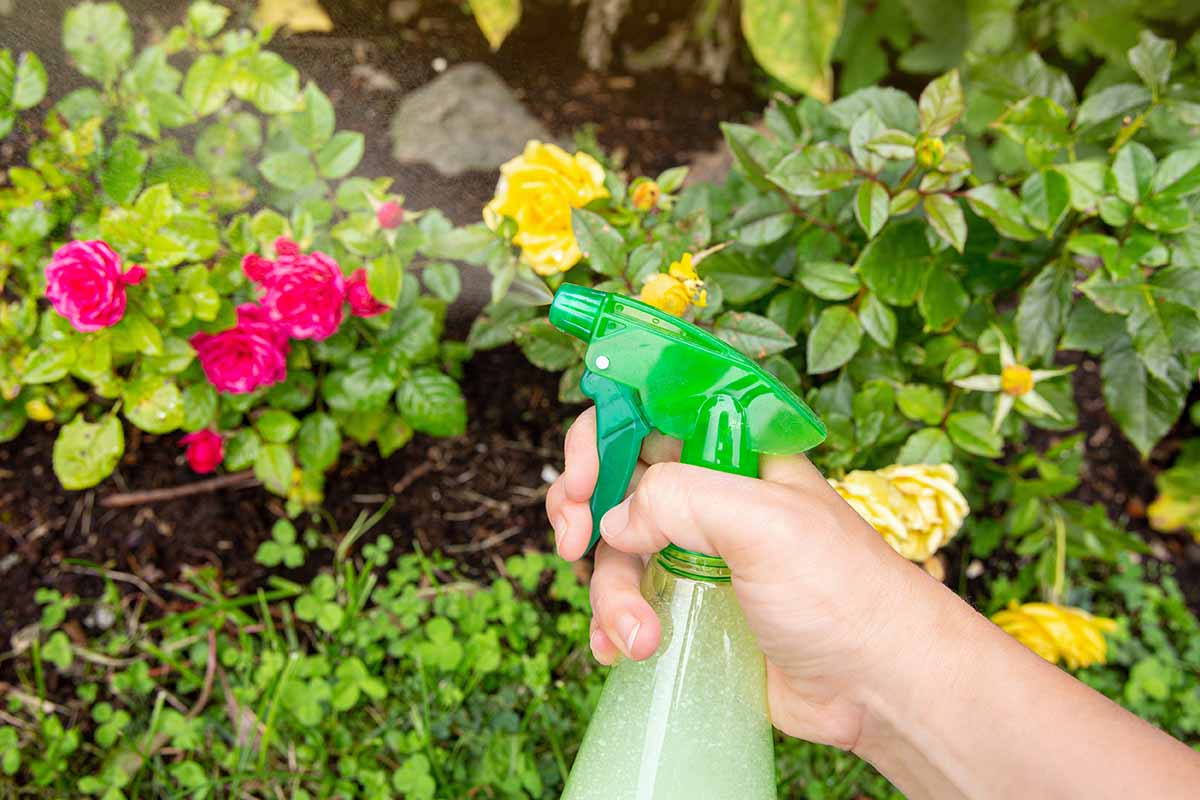
Spray your plants once a week for up to a month, but don’t rely on insecticidal soap alone if you already have a massive population, and don’t spray on windy days or when you can see lots of pollinators in the garden.
Chemical Pesticides
Keeping aphids out of your garden is impossible, and pre-treating your dahlias for pests doesn’t help.
These pests can still land, feed, and then fly off to die. Meanwhile, they’ve already left the virus behind. But you can limit how many are in your garden spreading diseases and draining your plants like little vampires.
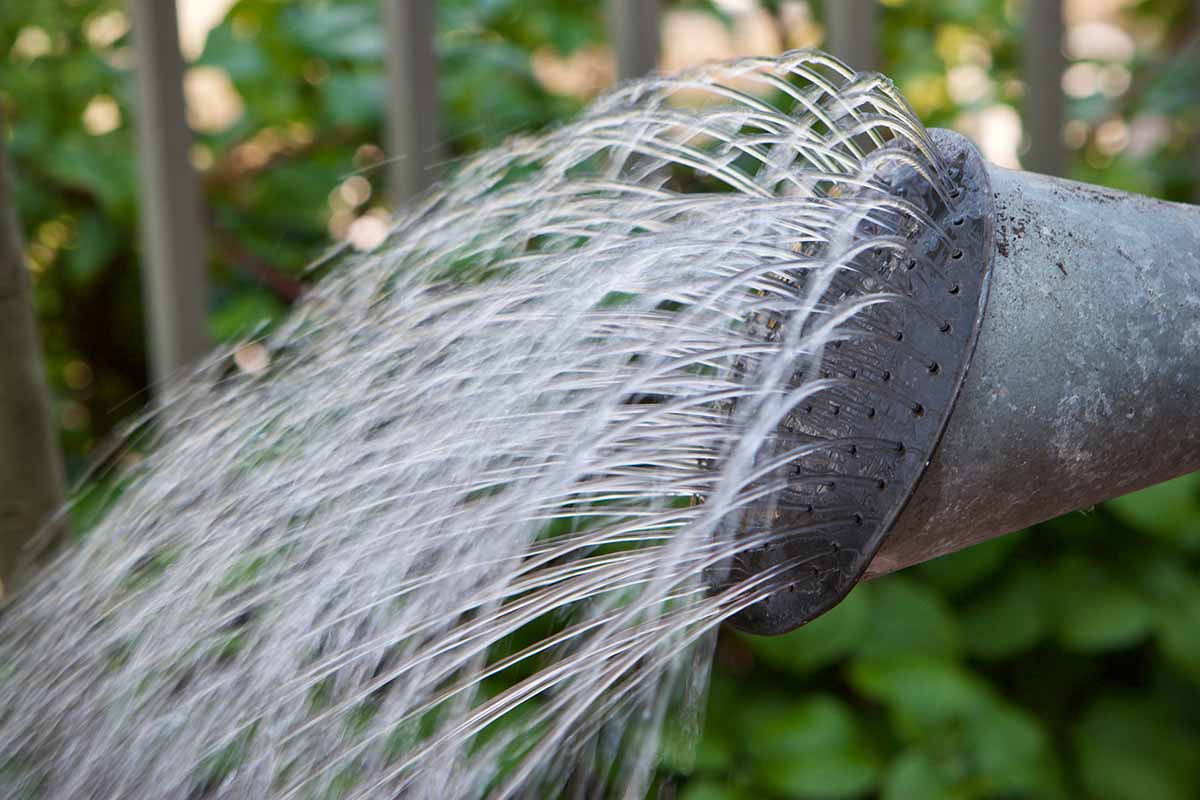
While you should generally reserve chemical pesticide control for vital commercial crops, if you’re feeling desperate because you keep losing flowers to this disease, a product that contains cyantraniliprole can be an effective way to reduce aphid, spider mite, and thrips populations.
Use it as a soil drench starting early in the growing season and regularly until fall.
You can use this in addition to the biological methods mentioned above.
Don’t Go Viral
The presence of dahlia mosaic virus might make your heart drop, but look on the bright side.
Once you experience it, you’ll know better how to avoid the problem in the future and you can get ahead of the situation next time.
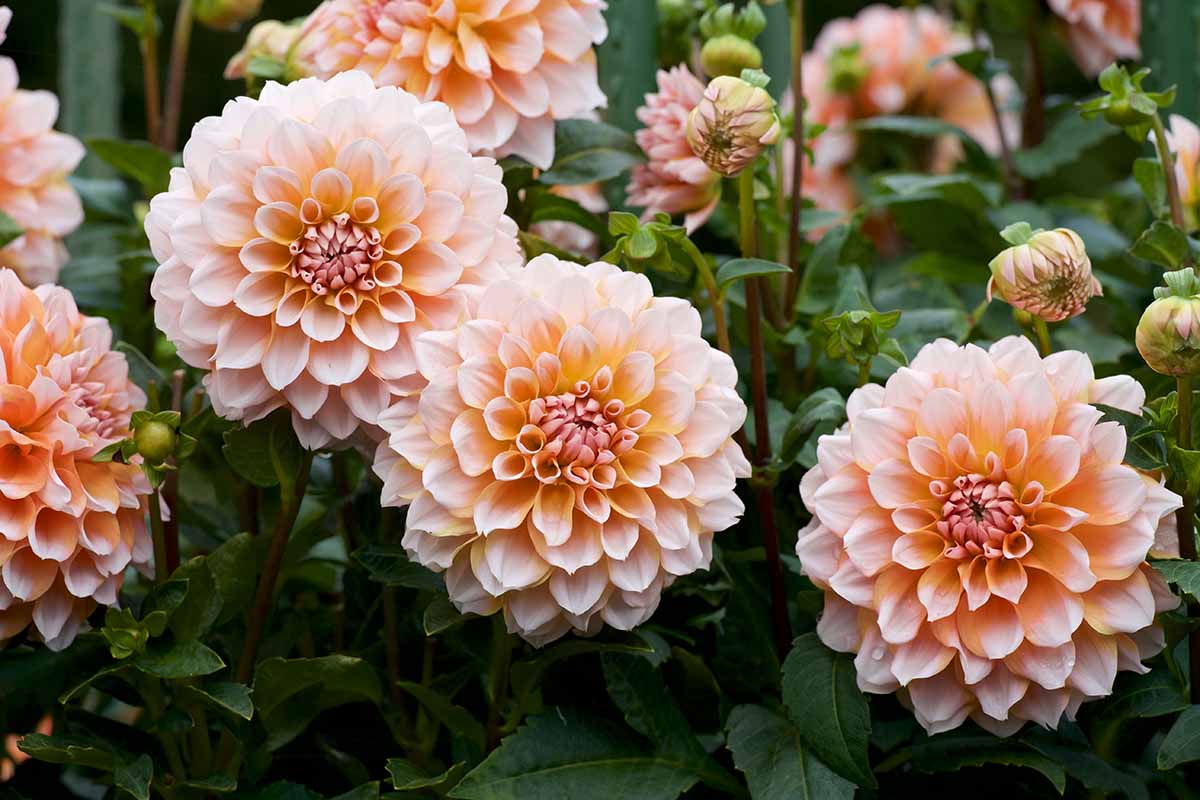
What symptoms are you seeing on your dahlias? Share with us in the comments so we can help other sufferers.
And for more information about growing dahlias in your garden, have a read of these guides next:
